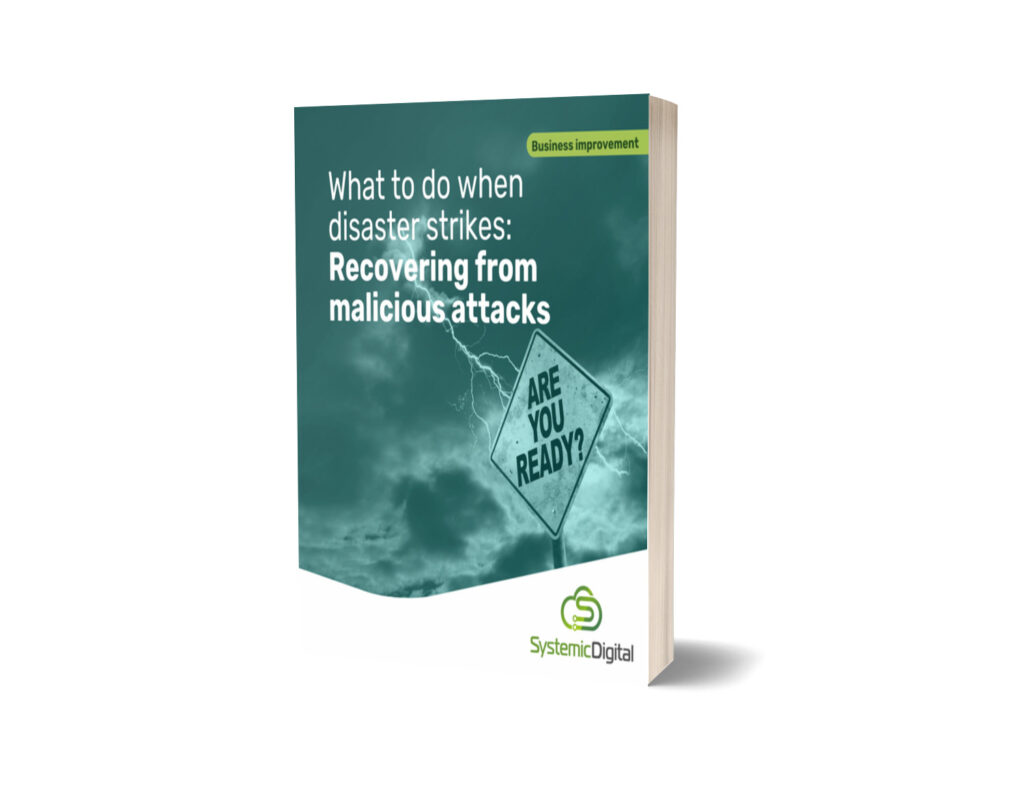No matter how strong your cyber security measures are, no system is completely immune to attack. Even with the best prevention in place, malicious threats like ransomware, phishing, and data breaches can still get through—and when they do, your next steps matter most.
Getting targeted and becoming a victim of these attacks can be overwhelming, so we’ve created a free downloadable guide, “What to Do When Disaster Strikes: Recovering from Malicious Attacks,” to help your business respond quickly and effectively when the worst happens.
Prevention Is Important—But It’s Not Enough
Strong passwords, firewalls, antivirus tools, and regular training are all key parts of a good cyber security strategy. But as threats become more sophisticated, even the most secure systems can be compromised. That’s why planning for recovery is just as important as prevention.
Why You Need a Disaster Recovery Plan
A disaster recovery plan outlines how your business will respond to major IT disruptions caused by cyber attacks, hardware failure, or natural disasters. It includes everything from who to contact and how to restore data, to how you’ll communicate with staff and customers during the outage.
Without a clear plan, your business could face extended downtime, lost data, reputational damage, or worse.
Get the Free Guide
Our guide, “What to Do When Disaster Strikes,” walks you through the steps to take immediately after a cyber attack, how to minimize the damage, and how to build a disaster recovery plan that works.
Whether you’re starting from scratch or updating an existing plan, this guide gives you the practical advice you need to get prepared—and stay protected.
Need Help Creating a Recovery Plan?
At Systemic Digital, we help businesses prepare for the unexpected with disaster recovery planning, cybersecurity support, and managed IT services. If you want help building or reviewing your recovery plan, get in touch with us today.







